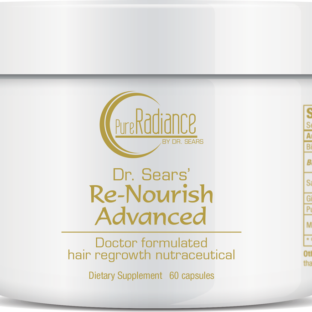
Winter wind and cold temperatures suck the moisture right out of your skin.
Today I want to tell you about a little known nutrient that soothes your winter skin and makes it firm and moist.
It can put new life into your skin deep down, at the cellular level.
That’s important because when your skin cells age, they stop making new, fresh copies of themselves. You start to see wrinkles and dull, tired skin.
But there’s an antioxidant nutrient that has a unique anti-aging power to renew your skin, leaving you fresher-faced and vibrant looking.
It’s a simple bioflavonoid found in many fruits and vegetables, especially the skin of apples, called quercetin (pronounced kwer-suh-tin). And it has the remarkable effect of renewing the youth and power of human skin cells.
In fact, there’s a little-known study I found that looked at the effects of quercetin on aging skin cells that were no longer making new copies. After treating the skin cells with quercetin, they were revitalized and started to reproduce again.1
Quercetin can also improve skin elasticity, giving you a fresh-faced glow.
When researchers apply quercetin directly to skin, it increases collagen by 23% in just 72 hours.2 Collagen is essential to firm healthy skin because it forms the supporting mesh beneath your skin. It keeps your skin tight and wrinkle-free.
Other research shows quercetin can fade away age spots and make spider veins disappear.3 It can also help soothe the redness that often occurs in harsh winter weather because it reduces inflammation.
Quercetin-rich foods help soothe, revitalize, and protect your skin. I recommend eating 15 to 40 grams per day. You can get that from a few servings of quercetin foods like red wine, tea, apples, kale, tomatoes, lemons, cranberries, grapes, and berries.
Foods in the allium family are also high in quercetin. They include onions, scallions, chives, leeks, shallots, and garlic.
One of my favorite sources of quercetin is Peruvian quinoa. The Inca called it the “mother grain.” But it’s not a grain at all. It’s actually a seed. Quinoa cooks like rice and is delicious. I also like it because it’s gluten-free and has twice the protein and fiber of rice.
For damaged skin you may want to get even more quercetin than food alone can provide. That means about 500 mg per day, and for that you’ll probably need to supplement.
Look for the glucoside form. It’s also called isoquercetin or quercetin 3-glucoside. Compared to other forms, isoquercetin reaches the bloodstream 10 times faster.4 And animal studies show it’s three times more bioavailable.5 I recommend taking 250 mg twice a day.
You can also apply quercetin directly to your skin. Studies show it can penetrate into the epidermis. But, it’s best to look for products with liposome technology.6 This allows the quercetin to be coated in a layer of fat that penetrates skin cells even better, and slow release over the entire day.7
That allows quercetin to actively protect your skin from harsh winter weather all day long.
To Your Good Health,
Al Sears, MD
1. Chondrogianni N, Kapeta S, Chinou I, Vassilatou K, Papassideri I, Gonos ES. “Anti-ageing and rejuvenating effects of quercetin.” Exp Gerontol. 2010;45(10):763-71.
2. Apichart V et al, “The effect of quercetin on expression of SOX9 and subsequent release of type II collagen in spheno-occipital synchondroses of organ-cultured mice.” Angle Orthod. 2012;82(2):247-53.
3. pharmainfo.net/namanm/quecertin-profile. Accessed December 12, 2014
4. Appleton J. “Evaluating the Bioavailability of Isoquercetin.” Natural Medicine Journal 2010; 2(1).
5. Morand C, Manach C, Crespy V, Remesy C. “Quercetin 3-O-beta-glucoside is better absorbed than other quercetin forms and is not present in rat plasma.” Free Radic Res. 2000 Nov;33(5):667-76.
6. dal Belo SE et al, “Skin penetration of epigallocatechin-3-gallate and quercetin from green tea and Ginkgo biloba extracts vehiculated in cosmetic formulations.” Skin Pharmacol Physiol. 2009;22(6):299-304.
7. Sonali Bose et al, “Formulation optimization and topical delivery of quercetin from solid lipid based nanosystems.” International Journal of Pharmaceutics Volume 441, Issues 1–2; 2013, Pages 56–66








